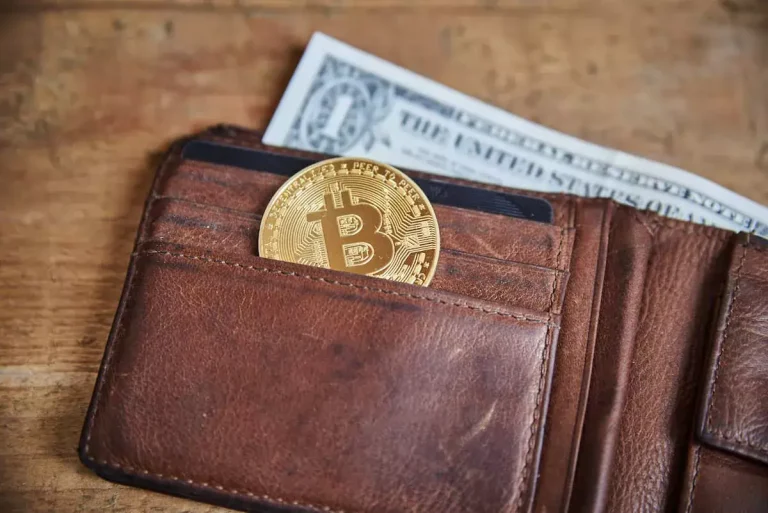ChainPort is a lock-and-mint bridge, which means that if the newly minted tokens are bridged again to their authentic blockchain, the user will withdraw their authentic tokens. The capability to port tokens from a congested or high-fee blockchain to a high-performance blockchain may be revolutionary. Low-fee and high-performance blockchains are particularly beneficial to Web3 gaming initiatives and microtransactions. When a developer builds a decentralized application (or a dApp), they typically choose a single blockchain to launch it on. That means the app is stuck using the features of that single blockchain.
Despite their lack of decentralization, trusted bridges are usually quicker and cheaper than their trustless counterparts. A blockchain bridge is a connection that permits the switch of tokens and/or arbitrary knowledge from one chain to a different. Both chains can have completely different protocols, guidelines and governance fashions, but the bridge provides a appropriate method to interoperate securely on either side.
The Necessity For Blockchain Interoperability
The subsequent rise in the number of cryptocurrencies and development of blockchain networks with programmability, similar to Ethereum, have created a totally new ecosystem. Blockchain guarantees the worth of decentralization and freedom from the management of any individual or institution. However, majority of blockchain networks exist in the type of isolated communities with their own economies. Therefore, blockchain bridges have turn into one of many inevitable requirements for the decentralized utility ecosystem. A blockchain bridge overcomes this impediment to allow blockchain networks to transfer knowledge and tokens with other outside networks.
This methodology ensures liquidity and facilitates the smooth switch of property throughout completely different networks. In the ever-evolving world of blockchain expertise, the idea of blockchain bridges has emerged as a crucial answer for creating and enhancing cross-chain interoperability throughout numerous networks. Blockchain bridges emerge as a perfect solution to the fragmentation dilemma. These protocols function as secure, trust-minimized conduits, traversing the chasms between isolated networks and enabling the frictionless trade of property. Blockchain expertise has lined quite an in depth journey since its introduction to the world in 2008 with the Bitcoin whitepaper.
The subsequent entry among types of blockchain bridges would point at unidirectional bridges. As the name implies, unidirectional bridges can solely ensure irreversible asset transfers from one community to another. The first entry among the kinds of a blockchain bridge would refer to a trusted blockchain bridge. It is basically a protocol governed under a centralized method, operator, or entity. Trusted blockchain bridge has earned the name as users have to belief the popularity or identification of a centralized bridge and deposit their funds on the bridge. Some of the examples of trusted blockchain bridges have proven proof of user-friendly interfaces, which may help in encouraging more users.
- Many bridging solutions adopt models between these two extremes with various degrees of trustlessness.
- When you want to transfer property from one chain to another, the blockchain bridge locks up your funds within its sensible contract.
- Put merely, that locks the project out of advantages of different blockchains.
- Users don’t should trust any central authority with the accountability for their belongings.
- Essentially, it entails utilizing an asset that follows the worth of an underlying cryptocurrency constructed to be used on another blockchain.
- This token can then be transferred throughout the bridge and ‘unwrapped’ again into the unique asset.
It enhances decentralized applications, boosts liquidity, and fosters collaboration. Although they have their setbacks, blockchain bridges allow environment friendly cross-chain interactions, unlock new use instances, and amplify the overall potential of blockchain know-how. A blockchain bridge (otherwise generally recognized as a cross-chain bridge), like a bodily bridge, connects two points. It facilitates communication between two blockchain networks by aiding in the transfer of data and digital assets. Both chains could have distinct protocols, guidelines, and governance structures, however the bridge supplies a safe means for each chains to interoperate (i.e., talk and share data).
What’s A Blockchain Bridge? (examples + Objective For Blockchains)
Blockchain bridges are protocols that facilitate the transfer of belongings and knowledge between completely different blockchains. They act as intermediaries, navigating the technical and security complexities of disparate networks to allow the frictionless circulate of worth. This cross-chain interoperability unlocks a wealth of advantages, remodeling the fragmented crypto panorama into an interconnected system. Blockchain bridges are a mechanism that enables the switch of digital property or data between two or more separate blockchain networks. That implies that each blockchain has its personal distinct consensus, protocols, and set of rules.

Once you locked up your funds within the platform’s smart contract, you’d obtain wrapped bitcoin (WBTC) on the Ethereum network. These are just a few of the transformative benefits provided by blockchain bridges. Protocols as quickly as limited to fundraising on Ethereum, like Hyperliquid and dYdX, can now migrate improvement to their own chains, fostering larger autonomy and tailored functionality. Bridges seamlessly transfer liquidity between chains, permitting these protocols to combine new blockchains and increase their user base whereas retaining important liquidity swimming pools. Let’s discover a variety of the key advantages unlocked by these digital arteries.
Wrapped Asset Methodology
It works by wrapping tokens in a wise contract after which issuing native assets that can be utilized on another blockchain of selection. The different token issuance methodology some bridges make use of is identified as the “liquidity pool method”. This course of works similarly to liquidity farming and depends on community participants to succeed. Investors must lock up certain ratios of tokens on the bridge’s underlying network, that are then used to finish bridging requests. The buyers offering liquidity are often rewarded for their efforts in running the bridge.

Custodial bridges have larger security qualifications and are much less more likely to be hacked or exploited. As with every custodial answer in cryptocurrency, the bridge must be highly reputable and trusted. With your WTBC on the Ethereum community, you would use it as you’d some other of Ethereum’s tokens.
Low Network Site Visitors
Atomic swaps are trade facilitators that permit two events to switch tokens across a quantity of blockchains. This kind of methodology does not necessitate using a centralized third party to enable offers. This isn’t excellent cross-chain communication, however it’s a system by which transactions are carried out between chains. Cross chain refers back to the technology that allows the interoperability between two relatively independent blockchains. Trust-based bridges, also called federation or custodial bridges, are centralized bridges that require a central entity or federation of mediators to run.
Moreover, the nascency of the technology implies that many new design fashions are still being constructed and tested, thereby presenting different novel assault vectors that can be exploited. Any main move in the software’s coding can result https://www.xcritical.com/ in an exploit and the potential of a targeted assault. Alternatively, an investor may just use a blockchain bridge as a method to cut back crypto charges compared to using a standard crypto exchange.
These isolated incidents aside, blockchain bridges stay an incredible innovation to attain decentralization and interoperability amongst totally different networks. Trusted bridges rely on members of a federation to substantiate transactions or transfer of funds. They additionally depend upon a central body or governing authority to regulate their operations. All members must oblige and hand over the management of their assets to this governing authority. Recently this has led to cyber-attacks that elevate the reliability and security of centralized bridges, such because the Ronin bridge hack that resulted in a lack of $540 million.
Like some rivals, Portal’s platform has a devoted swapping hub for stablecoins, on high of a bridge to the Layer 1 blockchain Sui. Blockchain bridges are an essential part of the decentralized finance infrastructure. However, certain bridges have been exploited in the past, resulting in hacks and misplaced property. Typically, these platforms come with composable plugins that may allow dapps to go cross-chain. For instance, developers can use a deterministic deployment proxy offered by the hardhat-deploy plugin(opens in a new tab).
What Are Blockchain Bridges And The Way Do They Work?
Their capability to connect disparate networks not only enhances functionality but in addition paves the way in which for a more integrated and efficient blockchain ecosystem. As the web3landscape continues to mature, the position of bridges in enabling this interconnected future becomes increasingly indispensable. The bedrock of any bridge’s security best blockchain bridges lies in its meticulously crafted good contracts. Engaging respected auditing firms to conduct thorough vulnerability assessments is crucial. Look for bridges like Ren, which have undergone a quantity of audits by esteemed crypto security experts, providing users with enhanced confidence within the code’s integrity.
Blockchain bridges primarily enable one blockchain (like Bitcoin) to interact with another (like Ethereum). This stage of interoperability is important for unifying the decentralized finance ecosystem and enhancing the worldwide adoption of cryptocurrencies. With this in thoughts, Polygon Bridge has designed its platform and created one of the most aesthetically pleasing and easy consumer interfaces out there.
This is where bridging will are available, it’ll flip cryptocurrencies into extra of a group sport working all together to make crypto a extra all-around resolution to the issues it’s attempting to solve. So bridges are wanted so common individuals can more easily entry new networks. They are additionally wanted as a result of some networks are cheaper, quicker, or safer. AAVE is a extremely popular lending and borrowing platform that permits you to lend out your cryptocurrency in flip for earning interest on it. Let’s go over a quite simple instance as to why you’d want to use a blockchain bridge. The group used the login credentials of Harmony staff in the Asia Pacific region to realize entry into the protocol’s safety system.